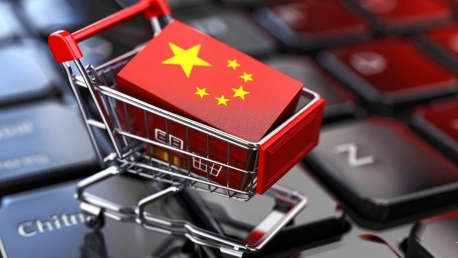China’s e-commerce sector, once the epitome of rapid growth, is currently facing a harsh reality check as it grapples with stagnating sales and fierce competition. The slowdown is a reflection of broader economic challenges in China, which is seeing a dip in consumer confidence and spending. This reduced spending has a ripple effect throughout the e-commerce landscape, putting stress on profitability for major players like Alibaba, JD.com, and Pinduoduo. What once was a thriving market scenario driven by heavy discounts, influencer-led campaigns, and lenient return policies is now a battleground for survival. According to projections by market research firm Euromonitor, the once double-digit growth rates are likely to fall into single digits, signaling a new era of cautious consumerism and tightened margins.Interestingly, the struggles of e-commerce giants are a microcosm of China’s broader economic issues. Reduced consumer spending and intense competition among e-commerce platforms have led to a “neijuan” effect, a Chinese term that implies working harder for diminishing returns. This phenomenon is pushing companies to invest more in traffic acquisition and influencer marketing while reaping smaller profits. Singles Day, China’s largest shopping event, is also losing its sparkle. Unpredictable sales outcomes coupled with substantial stock requirements are making it less attractive for both vendors and consumers. This decline in fervor for once highly-anticipated shopping events is a bellwether for the industry’s fading excitement.
Increased Costs and Competitive Pressures
Significant increases in traffic acquisition costs and expenses related to influencer campaigns have further muddied the waters for China’s e-commerce sector. Platforms are finding it increasingly difficult to stand out amid the competition, which has led to inflated marketing spends. The cost of acquiring new customers has soared, making profitability an elusive target for even the biggest players in the market. The intense competition among Alibaba, JD.com, and Pinduoduo has also resulted in other operational challenges. For example, more firms are compelled to offer sweeping discounts to lure shoppers, leading to additional financial strain and shrinking profit margins.The generous return policies initially introduced to attract customers have had unintended consequences. For instance, Pinduoduo’s lenient return policies, which began in 2021, have doubled the return rates to nearly 60%, imbuing an extra layer of pressure on vendors. When customers are frequently returning products, it not only complicates inventory management but also increases logistical costs. Vendors, already squeezed by tight margins, find themselves suffering further financial losses. Consequently, the situation forces many retailers to sell at a loss merely to stay afloat, putting further strain on China’s manufacturing and retail sectors.
Reflections of China’s Broader Economic Challenges
The troubles of the e-commerce sector are indeed reflective of larger economic issues plaguing China. Reduced consumer spending is compounded by stagnating average incomes and a dwindling pool of new customers. Many vendors are now prioritizing survival over profitability, selling goods at reduced prices just to keep factories functional. The broader economic slowdown is thus impacting every layer of the retail chain, from manufacturers and suppliers to end sellers. This landscape underscores the urgency for innovation and strategic adaptations to combat the turbulent environment.With the cushion of easy returns and discounts gone, companies have to focus on quality, customer experience, and technological advancements to retain consumer loyalty. Emerging technologies, data analytics, and personalized marketing are becoming crucial tools to navigate the current challenges. Still, the uncertainty surrounding the broader economic conditions adds another layer of difficulty. As consumer doubts linger, usage of the platforms may wane further, unless a renewed sense of value is injected into the shopper experience.
Future Prospects and Necessity for Innovation
China’s once rapidly expanding e-commerce sector now faces stagnating sales and fierce competition, reflecting broader economic woes in the country. Consumer confidence and spending have dipped, impacting profitability for major players like Alibaba, JD.com, and Pinduoduo. Where heavy discounts, influencer-led campaigns, and lenient return policies once fueled robust market growth, the landscape now resembles a battleground for survival. Market research firm Euromonitor projects that the sector’s former double-digit growth rates will likely drop to single digits, ushering in a new era of cautious consumerism and slimmer margins.The struggles of these e-commerce giants mirror China’s larger economic issues. Reduced consumer spending and intense competition among platforms have led to a “neijuan” effect, a term signifying increased effort for diminishing returns. Companies are compelled to invest more in traffic acquisition and influencer marketing while seeing smaller profits. Even Singles Day, China’s biggest shopping event, is losing appeal. Unpredictable sales outcomes and significant stock demands make it less attractive for both vendors and customers. This decline in enthusiasm for once highly-anticipated shopping events signals the industry’s waning excitement.









